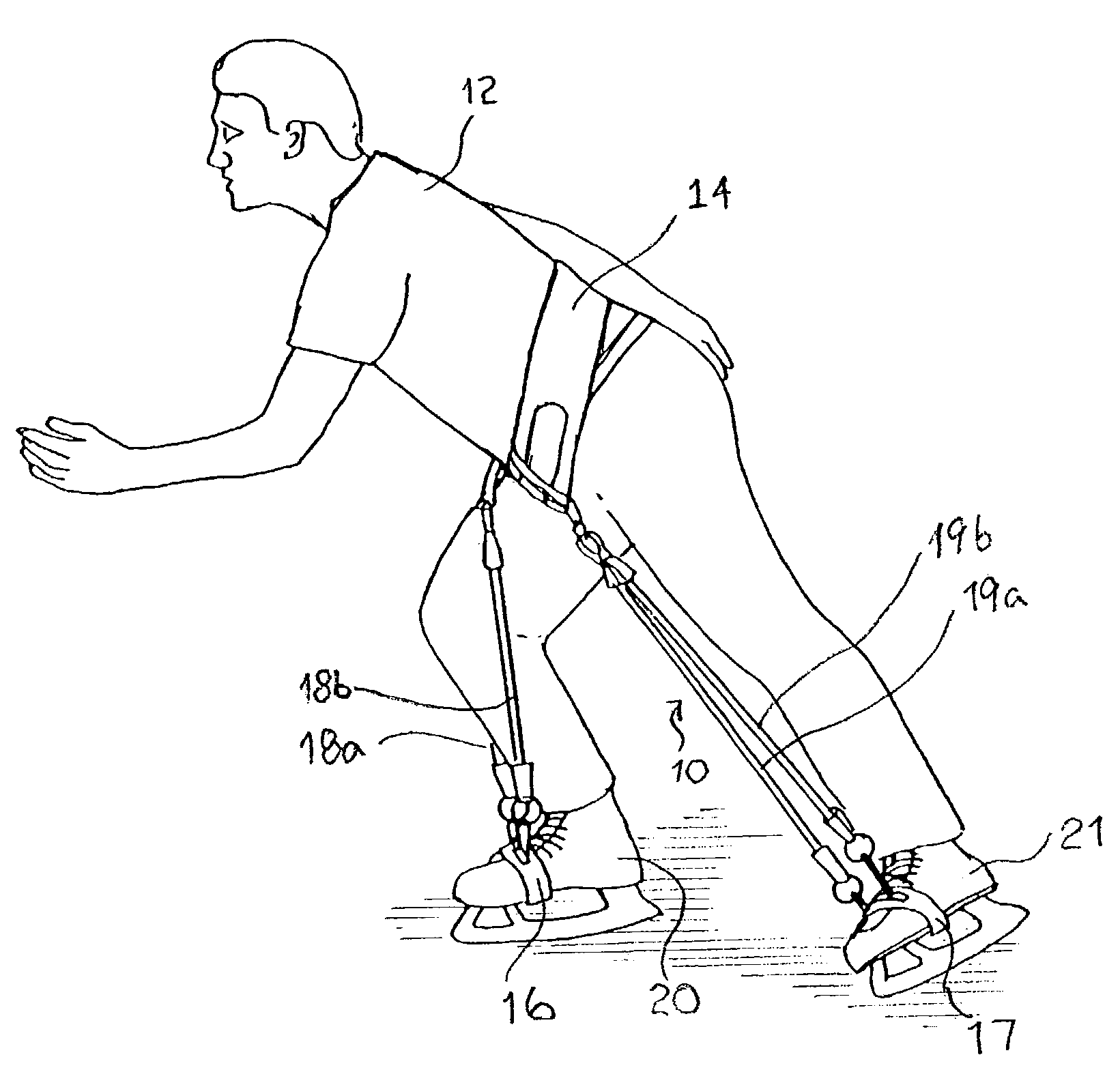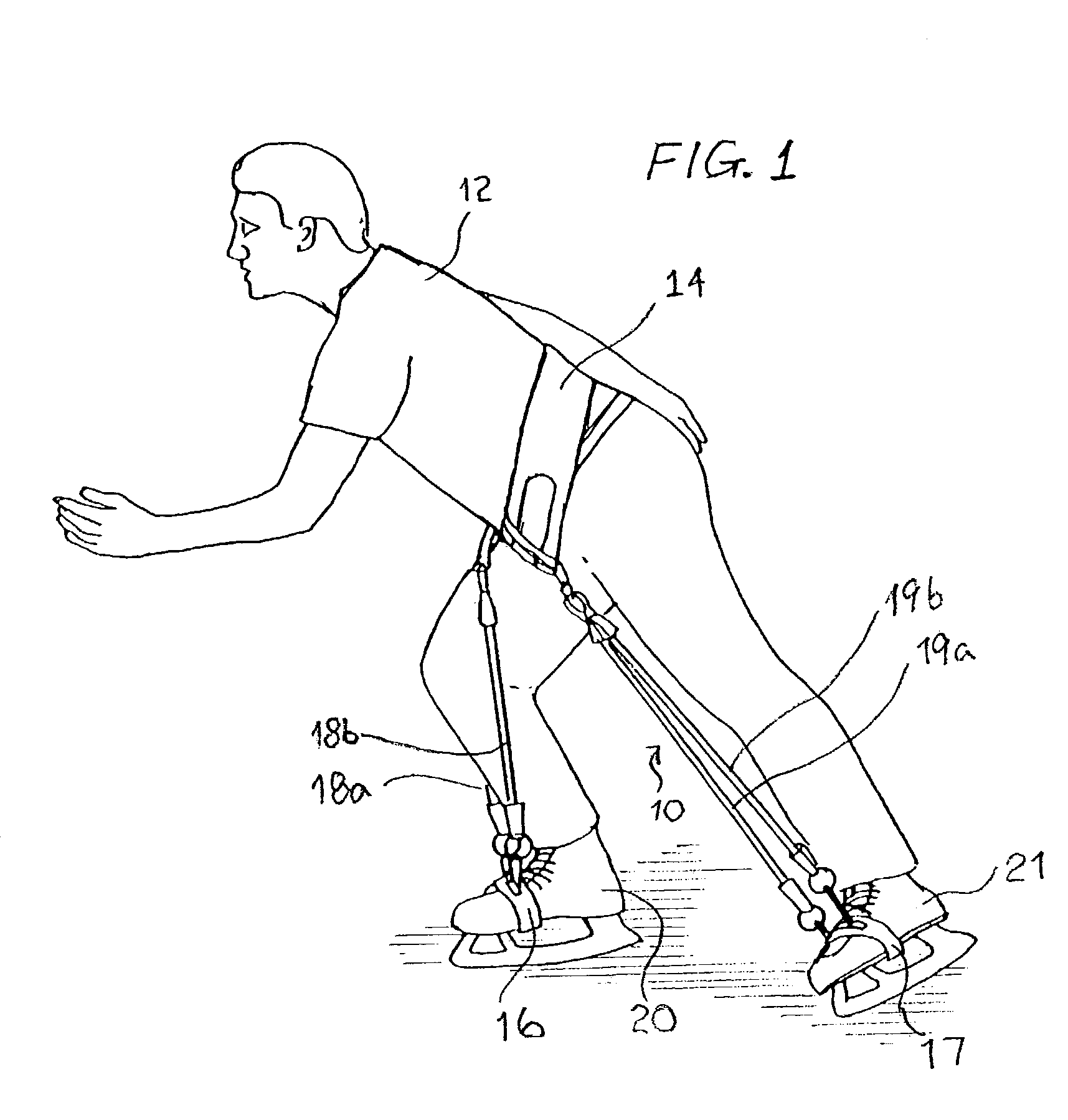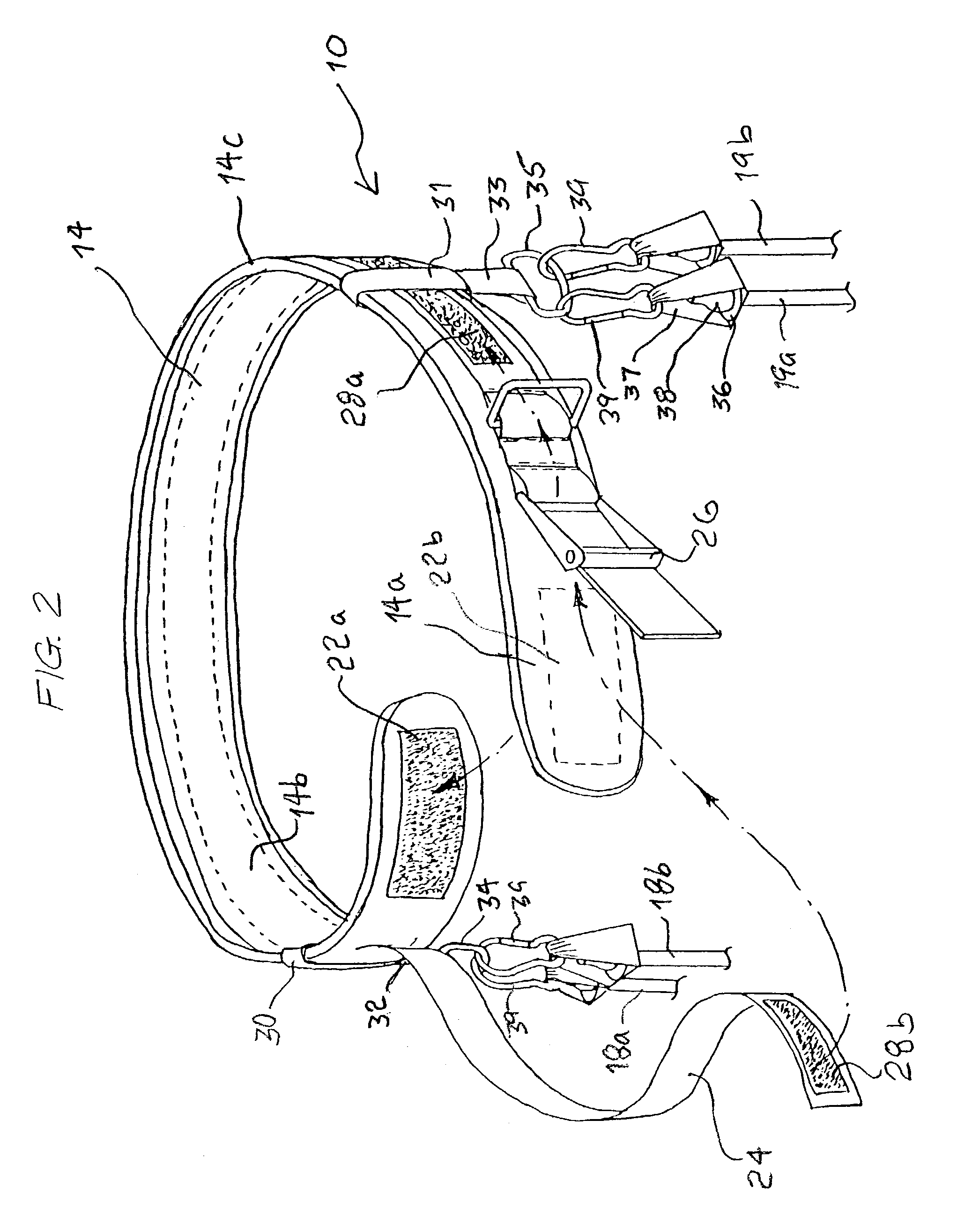Training device for and method for training gliding sport athlete
a training device and sport athlete technology, applied in golfing accessories, gymnastics, instruments, etc., can solve the problems of not encouraging the proper weight distribution in knee bend needed for a gliding sport athlete, the athlete movement trainer described in this patent would not be particularly helpful, and the training device disclosed
- Summary
- Abstract
- Description
- Claims
- Application Information
AI Technical Summary
Benefits of technology
Problems solved by technology
Method used
Image
Examples
Embodiment Construction
[0014]The present invention relates to a training device for and a method for training a gliding sport athlete. By the term “gliding sport,” applicant means a sport in which the athlete, during at least some portion of the athlete's movement, glides along the surface on or over which the sport is played. Non-limitative examples of gliding sports include ice skating, inline skating, snow skiing, water skiing, surfing and snowboarding. One embodiment of the present invention will be described in connection with ice skating, although one skilled in the art would, based on the following description and the attached drawings, understand how the device can be used in training an athlete participating in other gliding sports.
[0015]FIG. 1 is a schematic view showing the training device of the present invention, generally designated by the reference numeral 10, being used for training an ice skater 12. As shown in FIG. 1, the training device 10 includes a belt 14 for securing about the waist...
PUM
 Login to View More
Login to View More Abstract
Description
Claims
Application Information
 Login to View More
Login to View More - R&D
- Intellectual Property
- Life Sciences
- Materials
- Tech Scout
- Unparalleled Data Quality
- Higher Quality Content
- 60% Fewer Hallucinations
Browse by: Latest US Patents, China's latest patents, Technical Efficacy Thesaurus, Application Domain, Technology Topic, Popular Technical Reports.
© 2025 PatSnap. All rights reserved.Legal|Privacy policy|Modern Slavery Act Transparency Statement|Sitemap|About US| Contact US: help@patsnap.com



